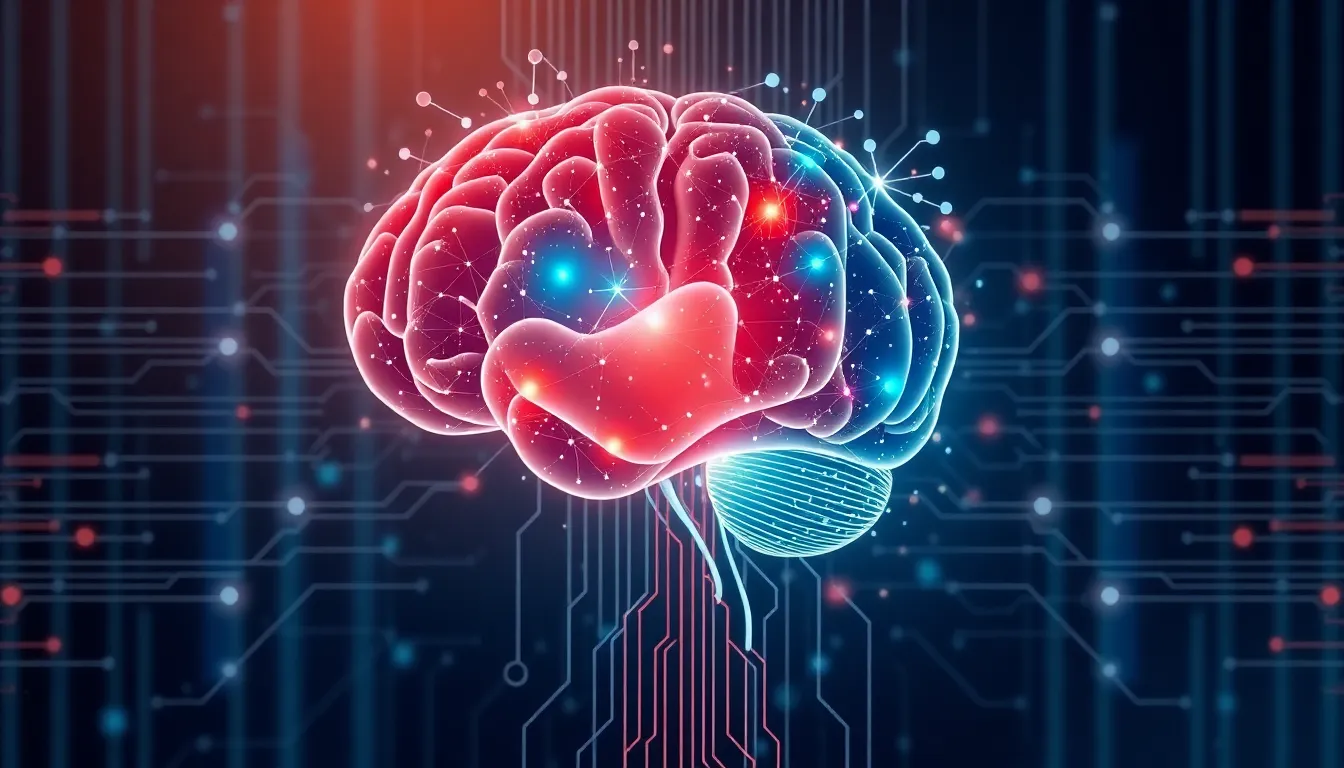Table of Contents
ToggleIn a world where talking to your devices feels more like a game of charades than a conversation, natural language understanding (NLU) steps in like a superhero with a cape made of algorithms. Imagine a technology that can decipher human language with the finesse of a seasoned linguist and the patience of a saint—sounds like magic, right? Well, it’s not; it’s just NLU making sense of our jumbled words and quirky expressions.
Overview of Natural Language Understanding
Natural language understanding (NLU) plays a crucial role in enabling machines to interpret and process human language. This technology focuses on understanding the intent behind words, allowing devices to respond appropriately. By analyzing linguistic data, NLU systems can comprehend context and nuances in conversation.
Various components contribute to NLU’s functionality. These components include syntactic analysis, semantic analysis, and machine learning algorithms. Syntactic analysis helps determine sentence structure, while semantic analysis focuses on meaning. Machine learning algorithms improve accuracy by learning from large datasets.
Applications of NLU are diverse and impactful. Virtual assistants like Siri and Alexa utilize NLU to provide relevant responses to user queries. Chatbots in customer service harness NLU for effective communication. Furthermore, sentiment analysis tools apply NLU to gauge emotions in text, benefiting businesses and researchers.
Challenges exist within the field of NLU. Ambiguities in language present difficulties as multiple meanings can arise from a single word or phrase. Additionally, colloquial language, slang, and regional dialects require ongoing adaptation for accurate comprehension. Overcoming these challenges is essential for continuous improvement.
Research in NLU continues to advance technological capabilities. Innovations aim to enhance understanding and promote seamless interactions between humans and machines. As progress continues, the potential applications of NLU will expand, further integrating it into daily life.
Key Concepts in Natural Language Understanding

Natural language understanding (NLU) encompasses various critical components essential for effective communication between humans and machines. These components include lexical analysis, syntactic analysis, and semantic analysis, each playing a specific role in enhancing language comprehension.
Lexical Analysis
Lexical analysis focuses on breaking down text into meaningful units called tokens. This process involves identifying words, phrases, and punctuation marks that aid in understanding context. It also includes recognizing different forms of a word, such as pluralizations and tenses. For example, when analyzing the word “dogs,” the system identifies its root as “dog” and understands its plural form. Efficient lexical analysis improves the accuracy of subsequent analyses by ensuring the correct interpretation of language.
Syntactic Analysis
Syntactic analysis, or parsing, examines the grammatical structure of sentences. This analysis identifies how words relate to one another and their function within a sentence. By establishing relationships between subjects, verbs, and objects, syntactic analysis helps machines comprehend sentence structure. For instance, in the sentence “The cat sat on the mat,” the parser recognizes “the cat” as the subject and “sat” as the verb. Accurate syntactic analysis allows for a clearer understanding of the intent behind a sentence.
Semantic Analysis
Semantic analysis involves interpreting the meaning behind words and phrases within a given context. This process considers the nuances of language, such as idiomatic expressions and implied meaning. For example, the phrase “kick the bucket” signifies death rather than a literal action. By understanding semantics, NLU systems can better grasp user intent and respond appropriately. Robust semantic analysis enhances the overall effectiveness of NLU, ensuring accurate communication between humans and machines.
Techniques Used in Natural Language Understanding
Natural language understanding employs various techniques to enhance machine comprehension of human language. Two noteworthy approaches include machine learning and deep learning models.
Machine Learning Approaches
Machine learning approaches utilize algorithms to interpret and analyze language data. These algorithms include decision trees, support vector machines, and Naive Bayes classifiers. Each technique varies in complexity and application. For example, decision trees map out decision paths based on input features, facilitating clear predictions. Support vector machines excel at classification tasks by identifying optimal decision boundaries. Naive Bayes classifiers rely on probability, allowing for efficient categorization of text. These methods enable systems to learn from data and improve understanding over time.
Deep Learning Models
Deep learning models represent a more advanced technique for natural language understanding. These models leverage artificial neural networks to process vast amounts of text data. Recurrent neural networks (RNNs) are particularly effective at handling sequential data, capturing contextual relationships within sentences. Convolutional neural networks (CNNs) also play a role, especially in tasks involving text classification. Transformer models, like BERT and GPT, showcase the ability to understand context and nuances by processing entire sentences simultaneously. This advancement leads to more accurate interpretations and responses in applications such as chatbots and virtual assistants.
Applications of Natural Language Understanding
Natural language understanding technology finds its way into numerous applications, driving innovation in various industries.
Chatbots and Virtual Assistants
Chatbots and virtual assistants utilize NLU to interpret user queries effectively. These systems facilitate smoother interactions by understanding user intent and providing relevant responses. Businesses often deploy chatbots for customer service, streamlining query resolution and reducing wait times. They operate on various platforms, supporting multiple languages and dialects, which enhances accessibility. Virtual assistants like Siri and Alexa leverage NLU for tasks ranging from setting reminders to controlling smart home devices, making everyday life more manageable. As users demand more conversational interfaces, advancements in NLU continue to improve the accuracy and responsiveness of these assistants.
Sentiment Analysis
Sentiment analysis tools apply NLU to gauge public opinions and emotions expressed in written content. Companies analyze customer feedback, social media posts, and reviews to gain insights into consumer sentiment. Such analysis helps identify trends and potential areas of concern, enabling businesses to adapt their strategies accordingly. NLU aids in distinguishing between positive, negative, and neutral sentiments, providing a clearer understanding of audience perceptions. As organizations increasingly rely on data-driven decisions, sentiment analysis powered by NLU proves essential for enhancing customer engagement and satisfaction. The continuous evolution of NLU technology enhances the effectiveness of sentiment analysis in delivering actionable insights.
Challenges in Natural Language Understanding
Natural language understanding faces several challenges that impact its effectiveness. These challenges often hinder accurate communication between humans and machines.
Ambiguity in Language
Ambiguity presents a significant hurdle in NLU. Many words and phrases possess multiple meanings based on context. For instance, the word “bank” can refer to a financial institution or the side of a river. Distinguishing between these meanings requires advanced algorithms capable of interpreting context. NLU systems struggle with slang and idiomatic expressions, which often complicate understanding. The presence of homonyms also contributes to this challenge as they can confuse machine interpretation. Ongoing research aims to develop better models that efficiently handle these ambiguities.
Contextual Understanding
Contextual understanding remains a critical aspect of effective NLU. Recognizing the appropriate context enables machines to interpret language accurately. For example, user intent can vary drastically based on preceding interactions. Therefore, an NLU system must consider the history of conversations to deliver suitable responses. Additionally, cultural references and situational cues greatly influence language interpretation. Nuances in tone and word choice can shift meanings, making context critical in accurate processing. Enhancing contextual understanding continues to be a primary focus in NLU research and development efforts.
Natural language understanding is revolutionizing the way humans interact with machines. By effectively interpreting language nuances and user intent, NLU enhances communication across various platforms. Its applications range from virtual assistants to sentiment analysis, significantly improving user experiences.
As technology continues to evolve, the focus on overcoming language ambiguities and enhancing contextual understanding remains paramount. Ongoing research and development in NLU promise to unlock even more potential, paving the way for smarter and more intuitive interactions. The future of communication between humans and machines looks brighter than ever with NLU at the forefront.




